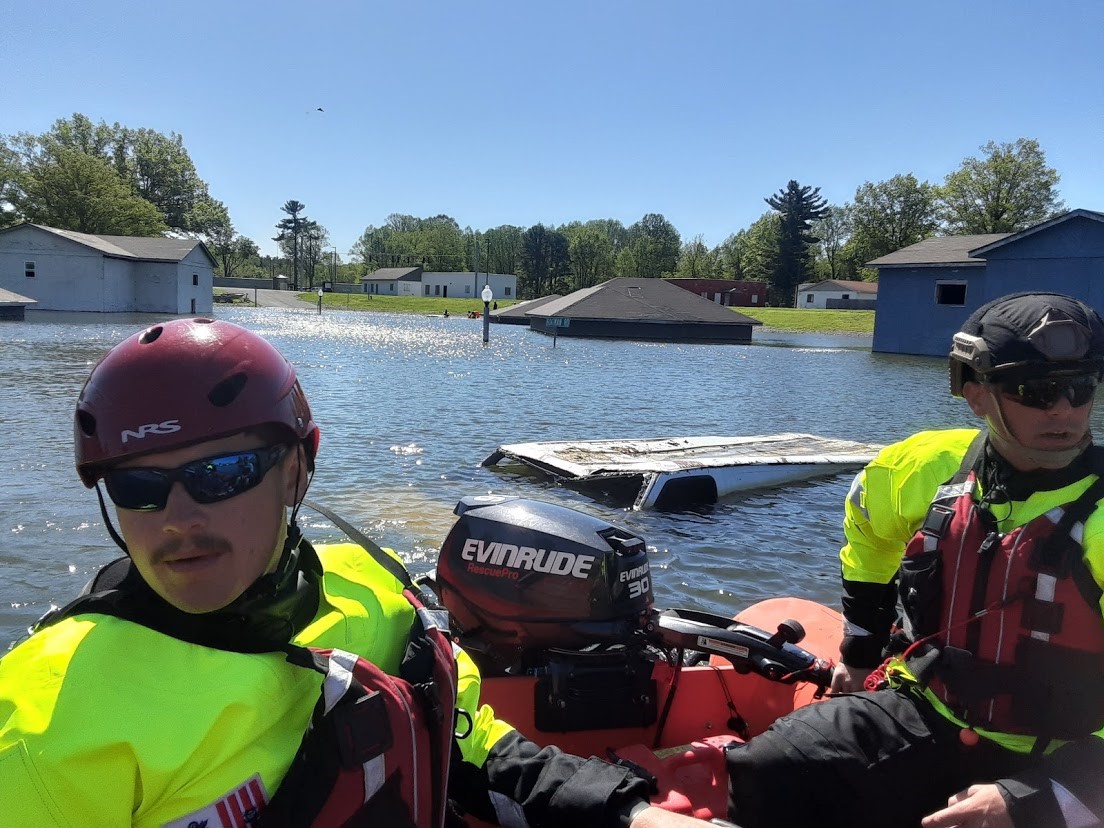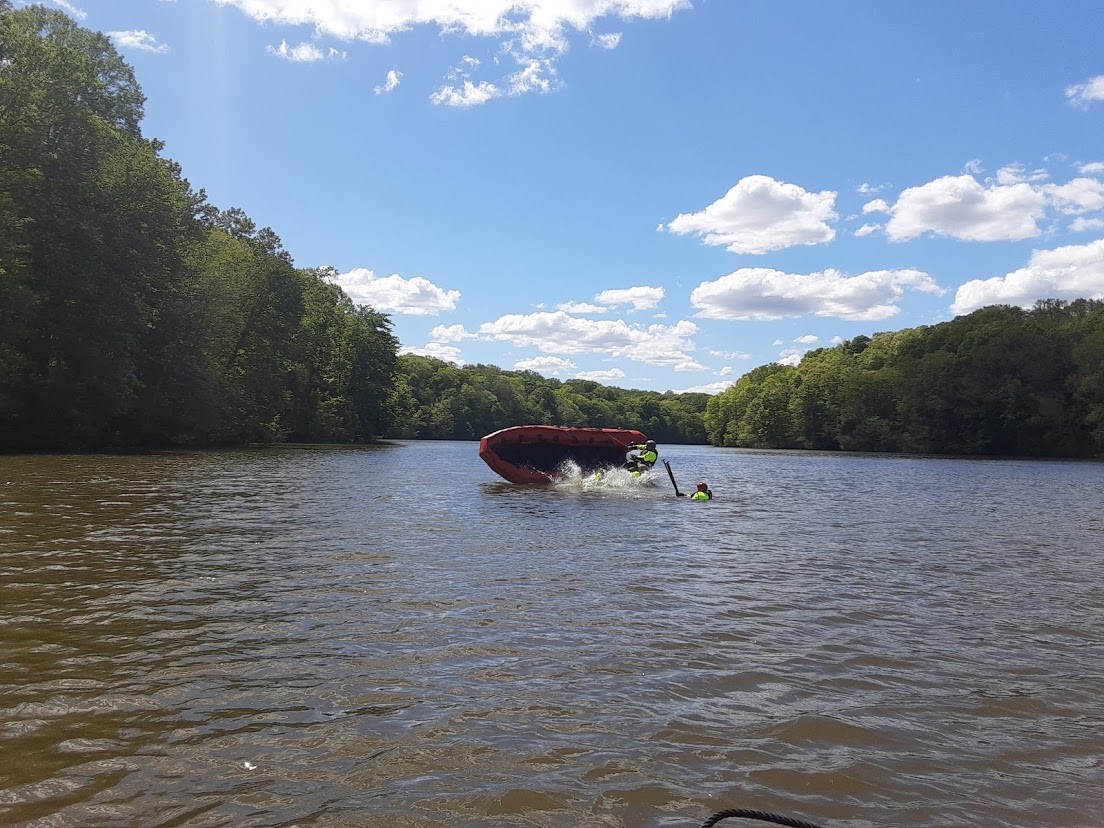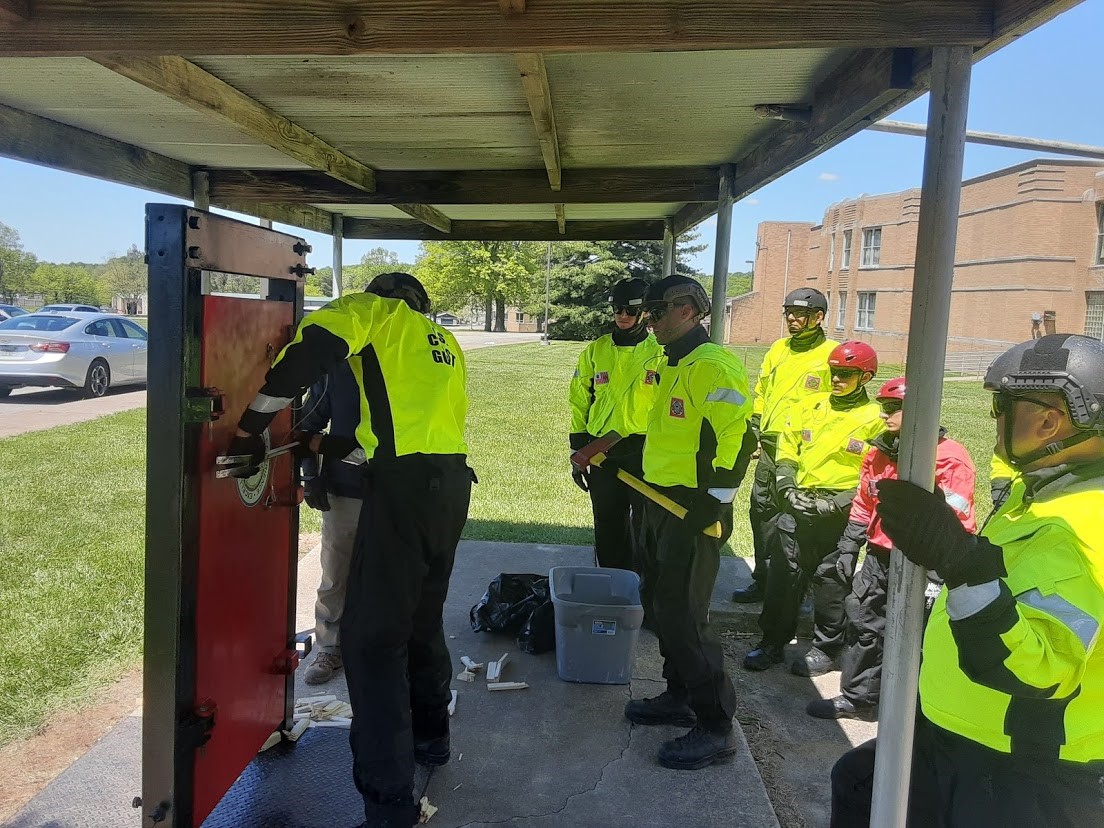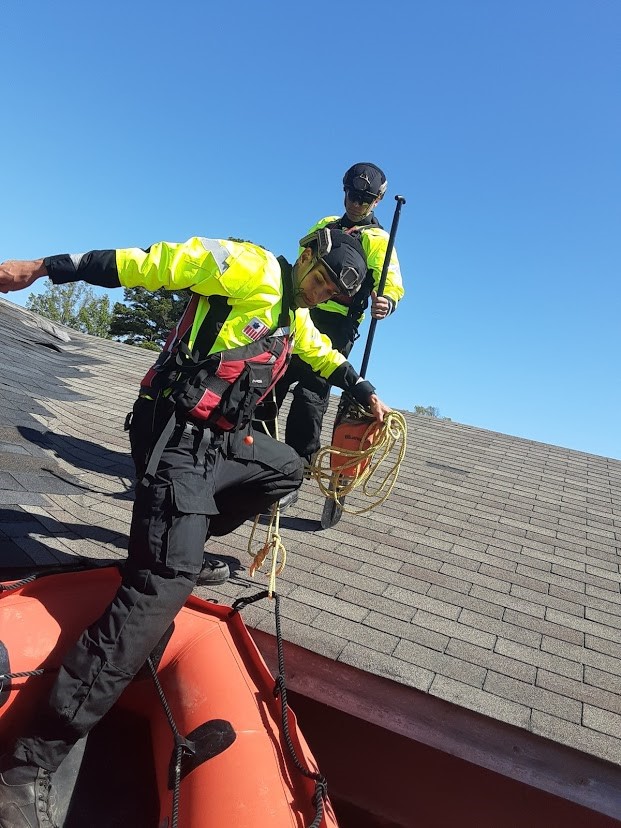In May, 2021, 18 Coast Guardsmen participated in the second annual five-day flood response training course at the state-of-the-art M uscatauck Urban Training Center. The center in Indiana has the best, most realistic training offered to the Department of Defense (DoD) and the Department of Homeland Security (DHS).
uscatauck Urban Training Center. The center in Indiana has the best, most realistic training offered to the Department of Defense (DoD) and the Department of Homeland Security (DHS).
The newly graduated Coast Guard members will now join the ranks of 69 members who participated in the service’s inaugural flood response training course last August. The graduates are now better able to serve their home units when deploying to flood zones.
The course starts with mornings in the classroom. The instructors help students get a handle on how the overall system functions in a flood emergency, including where the tasking comes from, Incident Command System (ICS) structure, and clear takes on authority, policy, and responsibility.
Most importantly, time is spent discussing what boat crews should expect to fit in the big flood response picture.
It’s all helpful information they’ll be able to draw from, but instructor Kevin Clendenin, a former West Virginia fire chief, bluntly reminds the class that not all of it will wind up matching their reality on the ground.
“Disasters are a […] show,” C lendenin warns. “People are frazzled. Infrastructure’s broken. It’s never what you think it ought to be.”
lendenin warns. “People are frazzled. Infrastructure’s broken. It’s never what you think it ought to be.”
The 18 Coast Guard members who trekked to Indiana for this training got to learn at the center’s flooded village: an entire neighborhood – roads, street signs, mailboxes, hydrants, vehicles, and houses – under assault by water.
There are skills that will give boat crews a certain advantage in saving people’s lives people (and pets) during a flood emergency, and the course wastes little time in diving into a range of instruction on such essential topics.
These include lessons on water movement, risk management, personal protective equipment (PPE), platform capability, vehicle approach in moving water, map reading, mechanical advantage, and handheld GPS operation. Since the instructors are veteran disaster responders themselves, their guidance comes as a mix of technical (GPS is a receiver, not a transmitter) and real-world wisdom (GPS burns batteries, so bring extra).
The instructors’ authenticity is not lost on the students. 
“They do search and rescue,” said Petty Officer 2nd Class Trevor Tallman, a boatswains mate from Station New Orleans. “So, you’re getting the best out there, and we’re getting it from them.”
After lunch, the students head outside under the open sky to apply the lessons they learned in class. And then, less than halfway into the course, it goes all outdoors – to the disappointment of nobody – shifting to pure active field work for the remainder.
Students get pulled into a wild range of training scenarios as they find themselves navigating through a desolate housing subdivision in one segment and breaching a bolted door in another.
The class favorite, however, is the in- and on-the-water training: the wading, exploring flooded houses, the attic extractions, pet retrievals starring Max the Rescue Dog, boat flips, and, of course, putting the Combat Rubber Reconnaissance Craft  (CRRC) through the paces on the reservoir – running the engine hot and leaning into the machine; getting a feel for their new platform they’ll depend on when they drop into the real flood.
(CRRC) through the paces on the reservoir – running the engine hot and leaning into the machine; getting a feel for their new platform they’ll depend on when they drop into the real flood.
The students clearly enjoy themselves while they develop skills for the crises that await, but, even more importantly, they’re solving problems with peers to accomplish these missions. The teamwork shows.
“On day one, they’re still figuring it out,” says instructor Clendenin. “Day three is when they all come together, and they stay together from there.”
“It’s a different kind of course,” adds Lt. Cmdr. Bradford Clark. Addressing the classmates horseshoed around him, he emphasizes. “Unlike in other Coast Guard courses, here we let you learn as you go, figure things out yourselves.”
The formula is working. By the time they pick up their certificates on the final afternoon, the former students are loaded with hands-on knowledge and confident in the value they’ll bring when they return to their units.
The floods are coming, and the May 2021 graduates of the Coast Guard Flood Response Course in Muscatatuck, Indiana, are primed to respond.
Additional Resources:
- MyCG Article: Wading Into Flooded Waters – New Flood Response Training Finishes Its Inaugural Course